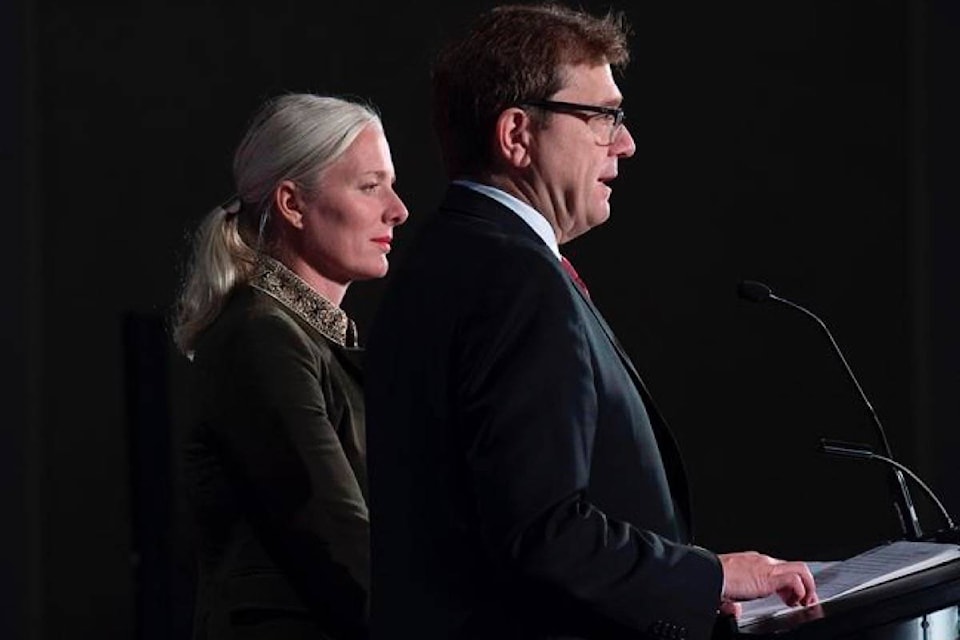Canada has joined a global alliance trying to rid the world’s oceans of millions of tonnes of old fishing nets.
Canada is the 13th nation to join World Animal Protection’s Global Ghost Gear Initiative, an international alliance of nations, companies, and environment groups started in 2015 to go after one of the most significant contributors to the earth’s plastic problem.
“We’re saying this is a critical issue for us to address,” Fisheries Minister Jonathan Wilkinson said in an interview.
Wilkinson added Canada to the alliance in Halifax this week as the federal government played host to G7 environment, energy and fisheries ministers.
Fishing gear is a far bigger issue to the ocean garbage problem than plastic straws, water bottles and grocery bags, but often flies under the radar as governments and environment groups focus on single-use plastics that will get more attention from businesses and consumers.
READ MORE: New maritime signs target derelict boats in B.C. bay
Measurements show fishing nets make up almost half the weight of the 80,000-tonne Great Pacific Garbage Patch, a soupy-mess of broken down bits of plastic floating in the Pacific Ocean between Hawaii and California. By size, the patch is bigger than the entire province of Quebec, and is the largest of five such plastic patches in the oceans around the world.
In addition to nets, ghost gear spotted in the patch includes crab pots, oyster spacers, ropes, eel traps, crates and baskets. Fishers sometimes purposely abandon the gear, but often it comes loose accidentally and floats away.
Josey Kitson, executive director of World Animal Protection Canada, says the lost gear is one of the biggest hazards for marine life. Research shows 136,000 seals, sea lions and small whales die each year after being tangled in abandoned fishing gear.
“It does what it’s meant to do which is fish,” Kitson said. ”It continues to fish indiscriminately catching whales, dolphins, sea turtles, even other fish that it wasn’t meant to catch.”
The gear, mostly made of plastic, can float thousands of kilometres away and exist for hundreds of years. Kitson said lobster traps with Canadian information on them have been found on beaches in the United Kingdom, for example.
Wilkinson acknowledged there isn’t a lot of good data to show how much Canadian fishing equipment contributes to the problem. He said tagging all fishing gear so it can be traced back to its origin is one of the initiatives Canada is looking at doing.
A system to report lost gear, as well as improving the ability to remove rogue nets and lines from the water are also necessary, he said.
Wilkinson said fishers on the East Coast trying to remove ghost gear are often prevented from doing so because existing regulations prevent the removal of gear you don’t own.
The United Kingdom is the only other G7 nation already part of the ghost gear initiative, but Kitson hopes Canada’s participation will encourage others to follow suit.
Kitson said her group is also looking for Ottawa to establish a dedicated marine debris program, and add ghost gear to fisheries management plans.
“We’re really looking forward to working with the Canadian government looking ahead into the future to make sure that ghost gear is a priority,” she said.
Mia Rabson, The Canadian Press
Like us on Facebook and follow us on Twitter.
